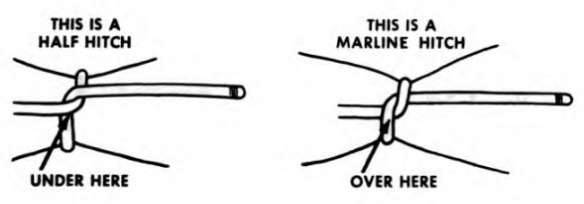Hitch Knot on:
[Wikipedia]
[Google]
[Amazon]
A hitch knot is a type of

knot
A knot is an intentional complication in cordage which may be practical or decorative, or both. Practical knots are classified by function, including hitches, bends, loop knots, and splices: a ''hitch'' fastens a rope to another object; a ' ...
used to secure a rope
A rope is a group of yarns, plies, fibres, or strands that are twisted or braided together into a larger and stronger form. Ropes have tensile strength and so can be used for dragging and lifting. Rope is thicker and stronger than similar ...
to an object or another rope. It is used in a variety of situations, including climbing, sailing, and securing loads. Hitch knots are classified based on their ability to be tightened or released, their resistance to slipping, and their strength. Some common types of hitch knots include the fisherman's knot, the water knot, and the clove hitch. Hitch knots are important because they allow a rope to be securely fastened to an object, enabling the rope to support weight or transmit force.
Physical theory of hitches
A simple mathematical theory of hitches has been proposed by Bayman and extended by Maddocks and Keller. It makes predictions that are approximately correct when tested empirically.Alphabetical list of hitch knots

See also
*List of knots
This list of knots includes many alternative names for common knots and lashings. Knot names have evolved over time, and there are many conflicting or confusing naming issues. The overhand knot, for example, is also known as the thumb knot. The ...
* Single hitch
A turn is one round of rope on a pin or cleat, or one round of a coil. Turns can be made around various objects, through rings, or around the standing part of the rope itself or another rope. A turn also denotes a component of a knot.
When the ...
References
{{Knots